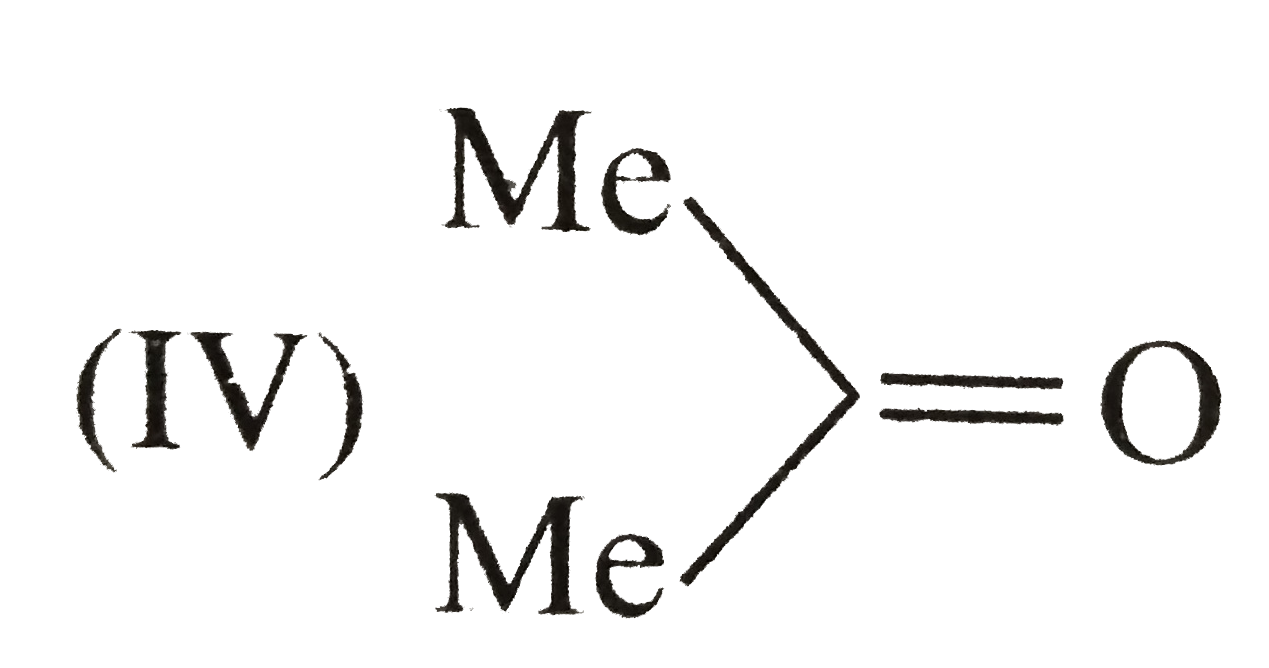Explain the following :
(a) In gaseous phase, the acidic characters of the following are :
CH3CH2COOH(I)>CH3COOH(II)
Video Solution
Text Solution
a. The acidic strengths are opposite to what is expected from inductive effects, which suggest that in gaseous phase, electronic phase, there is no role of base and solvents. So in gaseous phase, a large anion is more stable.
i. (I) anion is large than (II) anion, so (I) is a stronger acid than (II).
ii. (III) anion (size of CI>F) is large than (IV) anion, so (III) is a stronger acid than (IV).
iii. (V) anion (size of t-butyl >n-butyl) is large than (VI) anion, so (V) is a stronger acid than (VI).
b. i. Silicon is more electropositive than C and therefore, has an acid weakening ¯e donating inductive effect. consequenctly, anion of (II) is less stable than its acid. Hence, (II) is a weaker acid than (I).
ii. sp2hybridised C atom of (C=C) attracts the bonded ¯e's more than sp3-hybridised C atom and thus (−C=C−) has acid strengthening EWG. so (II) is a stonger acid than (IV).
iii. sp-hybridised C atom of (C≡C) attracts the bonded ¯e's more than sp2− or sp3−hybridised C atom and thus (−C≡C−) has acid strengthening EWG. so (V) is a stronger acid than (VI).
iv. (C=O) is polarised as (+δC=−δO) and because of (+δ) charge on C, the (C=O) group has acid strengthening EWG. so (VII) is more acidic than (VIII).
v. Both the (C≡N) and (C=O) groups have acid strengthening EWGs but sp-hybridised C atom of (C≡N) attracts the bonded ¯e's more than sp2-hybridised C atom of (C=O) so (IX) is more acidic than (X).
vi. Both have sp2−hybridised C atoms, but in (Ph−) they are much more resonance-stabilised and thus (Ph−) has more acid strengthening EWG than (−C=C−). Hence (XI) is a stronger acid than (XII).
|
Topper's Solved these Questions
- CARBOXYLIC ACIDS AND THEIR DERIVATIVESBOOK - CENGAGE CHEMISTRY ENGLISHCHAPTER - CARBOXYLIC ACIDS AND THEIR DERIVATIVESEXERCISE - Solved Examples
17 Videos
- CARBOXYLIC ACIDS AND THEIR DERIVATIVESBOOK - CENGAGE CHEMISTRY ENGLISHCHAPTER - CARBOXYLIC ACIDS AND THEIR DERIVATIVESEXERCISE - Exercises (Subjective)
19 Videos
- BIOMOLECULESBOOK - CENGAGE CHEMISTRY ENGLISHCHAPTER - BIOMOLECULESEXERCISE - Exercises Archives (Analytical And Descriptive)
8 Videos
- CHEMICAL KINETICSBOOK - CENGAGE CHEMISTRY ENGLISHCHAPTER - CHEMICAL KINETICSEXERCISE - Archives Subjective
23 Videos
Similar Questions
Knowledge Check
The name of the compound CH3−CH2COOH is
Abutanoic acidBethanoic acidCpropanoic acidDmuratic acid
Give IUPAC names of the following:
CH3CH2CH(CHO)CH2COOH
View SolutionGive IUPAC names of the following:
CH3CH2CH(CHO)CH2COOH
View SolutionThe decreasing order of acidic character of the following is:
(I) EtOH
(II) Me−COOH
MeOOC−CH2−COOMe
(IV)
View SolutionWrite IUPAC name of the following compound :
CH3CH2CH(CHO)CH2COOH
View SolutionWrite IUPAC name of the following compound :
CH3CH2CH(CHO)CH2COOH
View SolutionWrite IUPAC name of the following compound :
CH3CH2CH(CHO)CH2COOH
View SolutionComplete the following reactions :
(ii) CH3COOH+PCl5→
View Solution
